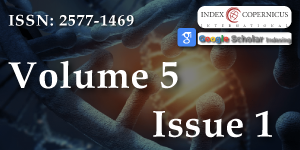Transcriptional profile of bovine preimplantation development selected based on G6PDH activity
Main Article Content
Abstract
The oocyte is the female gamete that contributes not only half of the genetic material but also all of the cytoplasm to the zygote, supplying the transcripts, proteins, mitochondria and other components necessary for early embryonic development. The intrinsic oocyte quality is one of the main factors affecting the embryo yield, the implantation rate and the rate of healthy offspring. It is obvious that a fertilized oocyte must reach the blastocyst stage within 6–9 days in the proper culture conditions to have a significant chance of inducing a pregnancy and producing an offspring. The ability to sustain the first week of embryonic development is clearly influenced by the follicular status from which the oocyte is obtained indicating that this developmental potential is inherent within certain oocytes. Since most early embryos that do not reach the blastocyst stage are blocked at or close to the maternal to zygotic transition (MZT)-stage, which occurs at the eight-cell stage in cattle, one could speculate that incompetent oocytes fail to appropriately activate the embryonic genome. Oocyte selection based on glucose-6-phosphate dehydrogenase (G6PDH) activity has been successfully used to differentiate between competent and incompetent bovine oocytes. Recently, molecular regulation of genes regulating biological process of Brilliant Cresyl Blue staining (BCB) selected oocytes and embryos was investigated to explain their variation in quality and developmental potentiality. This short review will highlights some of these efforts that have been done in this interesting area of research.
Article Details
Copyright (c) 2021 Ghanem N, et al.

This work is licensed under a Creative Commons Attribution 4.0 International License.
The Journal of Stem Cell Therapy and Transplantation is committed in making it easier for people to share and build upon the work of others while maintaining consistency with the rules of copyright. In order to use the Open Access paradigm to the maximum extent in true terms as free of charge online access along with usage right, we grant usage rights through the use of specific Creative Commons license.
License: Copyright © 2017 - 2025 |  Open Access by Journal of Stem Cell Therapy and Transplantation is licensed under a Creative Commons Attribution 4.0 International License. Based on a work at Heighten Science Publications Inc.
Open Access by Journal of Stem Cell Therapy and Transplantation is licensed under a Creative Commons Attribution 4.0 International License. Based on a work at Heighten Science Publications Inc.
With this license, the authors are allowed that after publishing with the journal, they can share their research by posting a free draft copy of their article to any repository or website.
Compliance 'CC BY' license helps in:
| Permission to read and download | ✓ |
| Permission to display in a repository | ✓ |
| Permission to translate | ✓ |
| Commercial uses of manuscript | ✓ |
'CC' stands for Creative Commons license. 'BY' symbolizes that users have provided attribution to the creator that the published manuscripts can be used or shared. This license allows for redistribution, commercial and non-commercial, as long as it is passed along unchanged and in whole, with credit to the author.
Please take in notification that Creative Commons user licenses are non-revocable. We recommend authors to check if their funding body requires a specific license.
Wassarman M. The mammalian ovum. In: Knobil E, Neil D, editors. The physiology of reproduction, New York, USA: Raven Press. 1988; 1: 69–102.
Ericsson SA, Boice ML, Funahashi H, Day BN. Assessment of porcine oocytes using brilliant cresyl blue. Theriogenology1993; 39: 214.
El-Shourbagy SH, Spikings EC, Freitas M, St John JC. Mitochondria directly influence fertilisation outcome in the pig. Reproduction. 2006; 131: 233-245. PubMed: https://pubmed.ncbi.nlm.nih.gov/16452717/
Alm H, Torner H, Loehrke B, Viergutz T, Ghoneim IM, et al. Bovine blastocyst development rate in vitro is influenced by selection of oocytes by brilliant cresyl blue staining before IVM as indicator for glucose-6-phosphate dehydrogenase activity. Theriogenology. 2005; 63: 2194–2205. PubMed: https://pubmed.ncbi.nlm.nih.gov/15826683/
Rodriguez-Gonzalez E, Lopez-Bejar M, Izquierdo D, Paramio MT. Developmental competence of prepubertal goat oocytes selected with brilliant cresyl blue and matured with cysteamine supplementation. Reprod Nutr Dev. 2003; 43: 179–187. PubMed: https://pubmed.ncbi.nlm.nih.gov/12956317/
Wongsrikeao P, Otoi T, Yamasaki H, Agung B, Taniguchi M, et al. Effects of single and double exposure to brilliant cresyl blue on the selection of porcine oocytes for in vitro production of embryos. Theriogenology. 2006; 66: 366–372.
Ahmed DAR, Ghanem N, Dessouki SM, Faheem MS, Gad AY, et al. Developmental Competence of Buffalo Oocytes Cultured Under Different Oxygen Tensions after Selection with Brilliant Cresyl Blue. World Vet J. 2020; 10: 246-253.
Sun J, Wang Y, Li R, Peng H, Hua S, et al. Oocytes Selected Using BCB Staining Enhance Nuclear Reprogramming and the In Vivo Development of SCNT Embryos in Cattle. PLoS One. 2012; 7: e36181. PubMed: https://pubmed.ncbi.nlm.nih.gov/22558373/
Lee S, Kang HG, Jeong PS, Nanjidsuren T, Song BS, et al. Effect of oocyte quality assessed by Brilliant Cresyl Blue (BCB) staining on cumulus cell expansion and Sonic Hedgehog Signaling in porcine during in vitro maturation. Int J Mol Sci. 2020; 21: 4423. PubMed: https://pubmed.ncbi.nlm.nih.gov/32580308/
Welch JE, O’Rand MG. Characterization of a sperm-specific nuclear autoantigenic protein. II. Expression and localization in the testis. Biol Reprod. 1990; 43: 569–578. PubMed: https://pubmed.ncbi.nlm.nih.gov/2289011/
Welch JE, Zimmerman LJ, Joseph DR, O’Rand MG. Characterization of a sperm-specific nuclear autoantigenic protein. I. Complete sequence and homology with the Xenopus protein, N1/N2. Biol Reprod. 1990; 43: 559–568. PubMed: https://pubmed.ncbi.nlm.nih.gov/2289010/
Dessie SW, Rings F, Hoelker M, Gilles M, Jennen D, et al. 2007.
Ghanem N, Ahmed DAR, Dessouki SM, Faheem MS, Gad AY, et al. Cellular and molecular alterations of buffalo oocytes cultured under two different levels of oxygen tension during in vitro maturation. Zygote. 2021; 1-11. PubMed: https://pubmed.ncbi.nlm.nih.gov/33622439/
Fakruzzaman M, Bang JI, Lee KL, Kim SS, Ha AN, et al. Mitochondrial content and gene expression profiles in oocyte-derived embryos of cattle selected on the basis of brilliant cresyl blue staining. Animal Reproduction Science. 2013; 142: 19-27. PubMed: https://pubmed.ncbi.nlm.nih.gov/24070583/

